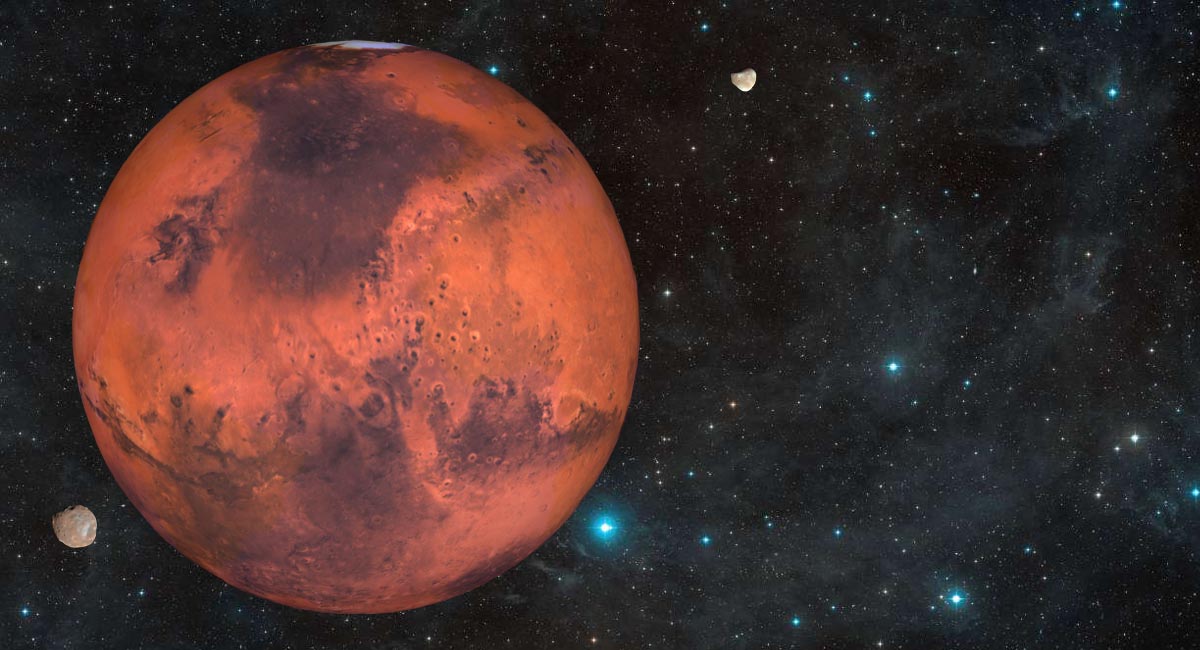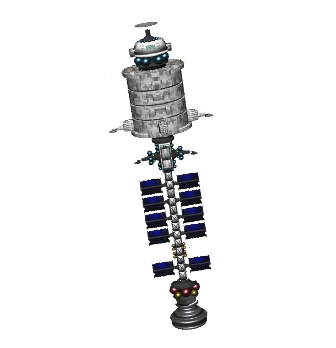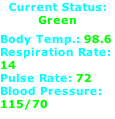

























 Join The Starfighters
Join The Starfighters














 Join Us
Join Us

















 Back
Next Page
About Us
Back
Next Page
About Us
Galactic Enterprise Log Book -
The collision alert alarm woke Decker out of a sound sleep. “Computer, status,” he growled.
“Long-
Decker quickly put on his emergency spacesuit that would allow him to survive if the ship depressurized. Leaving the helmet off, for the time being, he stepped into the private elevator that whisked him up to the central core where the core elevator was waiting to take him up to the ship’s bridge. “Give me a status report,” he said as he stepped through the door.
“We have a wall of meteor fragments coming right at us,” a crewman replied. “Simulations indicate that we are too close and moving too fast to avoid a collision.”
“Put it on the screen,” Decker said. The main view screen became a wall of small rocks steadily growing larger. Decker studied the screen for a moment. “There is a hole up and to the right,” he said.
“It’s not big enough,” the crewman replied.
“It will be,” Decker said. “Get me Kessler.”
“Kessler here, what’s our status?” the speaker in Decker’s chair crackled.
“We have a wall of meteors coming right at us,” Decker replied. “Do you have any missiles that can be triggered manually?”
“We could use their self-
“I need some of your fighters out in front of us right now to blow a hole through a rock wall large enough to get the ship through, or we are not going to survive the impact,” Decker said. “The missiles need to detonate just before they impact the meteors.”
“Ok, I’m scrambling my pilots now. Give me a target, and I’ll control the missiles from here,” Kessler said. Five minutes later fighters began to launch from A and B flight decks.
Kessler had all the latest military toys. The missiles he had could be launched and controlled by the fighter itself, or the missiles could be controlled from a remote location which was what Kessler planned on doing from his computer console.
The first fighter fired all its missiles the moment it came into firing position and then rolled out of the way to make room for the next fighter. The explosive force of the missiles opened the hole in the wall of rocks little by little. By the time the last two fighters had launched Kessler was already having the first two fighters rearmed.
It was a desperate race against time as the Galactic Enterprise positioned itself to pass through the ever-
The meteors themselves were not really traveling very fast, a few thousand miles per hour. It was the Galactic Enterprise’s speed that made them really dangerous as the big ship was traveling at 500,000 miles per hour. Impact with the wall of meteors was only seconds away when Kessler ordered his fighters still outside through the hole.
It was like threading a needle with a thread that was almost too big for the eye. Somehow they made it. Small stray meteor fragments tore long gashes in the sides of the Habitat Section of the ship, but the ship survived, and no one was hurt. No key areas of the ship were damaged, and the ship’s repair crews had the holes repaired and the ship holding air in less than 8 hours. However, it was nearly a week before the long gashes on the outside of ship were fully repaired.
The Galactic Enterprise slipped into Mars orbit with a collective sigh of relief. Satellites were sent into orbit, and half dozen landers with their corresponding rovers were dropped to study the region in and around the edge of the icecaps of both poles. This would be the most intense study of Mars ever done, but on this trip, it was just another planet that would be scrutinized.
The ship looked down on the planet trying to answer some of the great mysteries the planet had kept hidden for decades. John stared out one of the few windows onboard the ship. The zero-
“You’re working late,” John said casually.
The Galactic Enterprise ran on a 24-
“I like the solitude and the view,” Sharon replied. “You work in engineering don’t you?”
“Yep, I keep the anti-
“Well, it looks like you’re doing a fine job... so far.
John was completely disarmed by the girl’s smile. “I’m John Thomas,” he said.
“Sharon.”
“It is a pleasure to make your acquaintance Sharon.”
“Are you just getting off duty?” Sharon asked.
“Pretty much,” John replied. “What about you? What are you working on?”
“I’m on my own time here,” Sharon said. “If I tell you what I’m doing you’ll just laugh, everybody does.”
“You can tell me, and I promise I won’t laugh.”
“I’m studying the face on Mars.” She expected John to laugh but true to his word he did not laugh.
“That is a bit on the fringe, isn’t it?” he said.
“Maybe, but it is something I’ve always been interested in,” she replied.
“I thought the face on Mars was debunked at the turn of the century.”
“It was, but you know conspiracy theories have run amuck since then, and even now many believe NASA covered up the fact that they had proof that intelligent life once existed on Mars.”
“So, are you one of those people who still believe?” John asked.
“No, not really, but there is a part of me that has always wondered who was right,” Sharon replied. “I figured since I was here anyway; why not take a look for myself.”
“What have you found?”
“I think that until we put a man on Mars, the issue will never really be solved. There are still enough abnormalities to keep Man and Hollywood intrigued for years to come. Mostly, I think it is just clouds.”
“What do you mean?” John asked.
“You know when you see images in the clouds. They really aren’t there; our mind makes them up because of patterns stored in our brain. Our brain simply associates the random shape of the clouds with a familiar pattern stored in our brain. It is the same with the face on Mars,” Sharon replied.
“So we see a face because we want to see a face not because there is really a face there.”
“Exactly, I bet if you viewed Earth from orbit you would find natural features that would look like familiar objects too.”
“You would also find the remains of ancient civilizations,” John said.
“That is what is wrong with so-
“Not to change the subject or anything but I was planning to take in one of the late night movies on level two. Would you care to join me?” John asked.
“Sure.” Sharon put the computer to sleep as she un-
Turn the page

Mars Data
Average Distance from the Sun
Metric: 227,936,640 km
English: 141,633,260 miles
Perihelion (closest)
Metric: 206,600,000 km
English: 128,400,000 miles
Aphelion (farthest)
Metric: 249,200,000 km
English: 154,900,000 miles
Equatorial Radius
Metric: 3,397 km
English: 2,111 miles
Equatorial Circumference
Metric: 21,344 km
English: 13,263 miles
Volume
Metric: 163,140,000,000 km3
Mass
Metric: 641,850,000,000,000,000,000,000 kg
Density
Metric: 3.94 g/cm3
Surface Area
Metric: 144,100,000 km2
English: 89,500,000 square miles
Equatorial Surface Gravity
Metric: 3.693 m/s2
English: 12.116 ft/s2
Escape Velocity
Metric: 18,072 km/h
English: 11,229 mph
Sidereal Rotation Period (Length of Day)
1.026 Earth days
24.62 hours
Sidereal Orbit Period (Length of Year)
1.8807 Earth years
686.93 Earth days
Mean Orbit Velocity
Metric: 86,871 km/h
English: 53,979 mph
Orbital Eccentricity
.0934
Orbital Inclination to Ecliptic
1.8 degrees
Equatorial Inclination to Orbit
25.19
Orbital Circumference
Metric: 1.366,900,000 km
English: 849,400,000 miles
Minimum/Maximum Surface Temperature
Metric: -
English: -
Atmospheric Constituents
Carbon Dioxide 95.32%
Nitrogen 2.7%
Argon 1.6%
Oxygen 0.13%
Other 0.25%
Moons
1. Phobos
2. Deimos



















